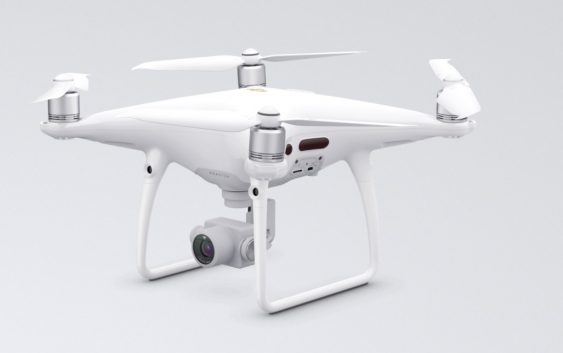By Alex Shoolman
DJI has recently announced and released a very slight, incremental upgrade to the Phantom 4 Pro drone. Priced at £1,589 the new Phantom 4 Pro V2.0 now essentially replaces the old Phantom 4 Pro. While the upgrades are minor, they do provide a number of quite good benefits over the older model so let’s take a look.
To being with the new P4P V2 uses OcuSync to connect to the remote controller where as before it used the LightBridge standard. This new version supports automatic dual-frequency band switching and connects to DJI Goggles RE wirelessly which is great as you no longer have annoying cables everywhere while flying. It also has a fantastic 7 km / 4.37 mile range however as it uses a completely different standard to the P4P, the controllers aren’t compatible between the two models. While it’s a shame that there is this slight incompatibility it is understandable as DJI iterates on its controller technology. The new OcuSync uses TDM (Time Division Multiplexing) to send the control signals and also receive the video signal at the same time. TDM is very common in telecommunications hardware and has been a great technology for years. The new OcuSync also automatically scans for the best frequency to use (2.4Ghz or 5Ghz) and switches to it so that it minimizes interference issues.
There is also new, low noise propellers similar to what was released for the Mavic Pro Platinum which reduce noise by around 4db. For those unfamiliar with the decibel system, a 3db reduction is equal to halving the noise level as it is a logarithmic scale. So a 4db reduction should be quite noticeable and is equivalent to a 60% reduction. The other good news is that these propellers are also compatible with the P4P model. So if you’ve already got a P4P and would like it to be a bit quieter, you can just buy some from the store here and put them on! That being said, part of what makes the P4P V2.0 quieter is their new FOC ESC drivers working with the new propellers. The new drivers use sinusoidal current for increased stability and have been reported by testers of the Mavic Pro Platinum to slightly change the pitch of the drones buzzing noise making it a lot less irritating to the ear.
Also added in its FlightAutonomy system is a dual rear vision sensor setup. This pairs infrared sensing for a total of 5 directions of obstacle sensing and 4 directions of obstacle avoidance. The infrared sensors are able to sense larger areas and measure the distances between the drone and any close objected more accurately while also avoiding interference that the older ultrasonic sensors can be confused by. The result is more reliable sensing and protection of the drone while it’s flying. Beyond these new sensors the camera is the same 1″, 20MP sensor however it is now built with a mechanical shutter and a large-aperture prime lens. As a result it eliminates rolling shutter distortion which can occur when taking images of really fast moving objects. It can also happen when you’re flying the drone at high speeds. Add to this the fact that it can shoot up to 4K at 60FPS with a bitrate of 100Mbps and it’s one of the best consumer grade camera drones in the sky. Flight time of 30 minutes and maximum speed are the same so it’s not a huge upgrade overall but of course very welcome.
Along with the base £1,589 price you can also get the drone in a number of different packages. There is a separate controller that has a built-in 5.5″, 1080p screen which DJI claims is more than twice as bright as a conventional smartphone. If you want you can get this RC with Screen instead of the standard controller in a package for £1,819. You can get the drone, standard controller as well as the DJI Goggles Racing Edition for 1,978. And if you feel like burning an extra large hole in your pocket you can go the fully upgraded everything and get the package that includes the drone, RC with Screen and the Goggles RE for a whopping £2,208!
Liked this piece? I write a whole lot more over at my official site, www.AlexShoolman.com covering things like drones, nanotechnology, AI, home battery storage, self-driving cars and everything that’s futuristic and can help you live a richer, happier and more efficient life.



